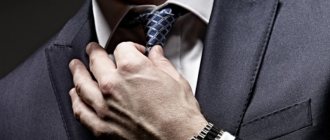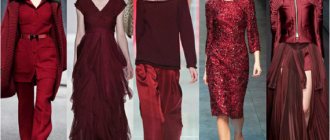Asthenicity is thinness, which visually can resemble a weak person.
However, in reality it often turns out to be different. Asthenic physique of a person - narrow shoulders, narrow chest, presence of a waist. The face is oblong, elongated, oval, sometimes resembling a triangular shape. The arms and legs seem to be elongated (they may seem so due to thinness and short body size). Look at the photo above. The color and type of skin also differs. Usually it is pale, light, and in women it is especially sensitive. These characteristics are general.
Who are asthenics?
The Greek particle "sthenos" means "strength", and when combined with the prefix "a" it means negation. Therefore, in fact, asthenic means powerless, weak. The human constitution is laid down even before birth and is predetermined by genetics.
Asthenics have not only certain external features, but also a unique psycho-emotional inner world, a special type of nervous system. Visually, asthenics are distinguished by thinness. Such people have thin bones, thin wrists and hands, narrow shoulders, an elongated pale face, and average or above average height.
The connection between the physical constitution and mental characteristics was first noticed by the German psychologist Kretschmer. He noted that people prone to dystrophy have a developed but extremely sensitive nervous system. The mental abilities of such people are above average.
However, excessive vulnerability causes them to become withdrawn and emotionally cold. Asthenics are characterized by increased fatigue and low resistance to stress. With excessively accumulated fatigue, asthenic people become irritable, explosive, suspicious and anxious.
Compared to other types (normosthenics and hypersthenics), asthenics are less resilient both physically and morally. Excessive social activity deprives them of energy, which, without proper rest, does not have time to recover.
Asthenics: description of appearance
Experts distinguish 3 body types: asthenic, normosthenic and hypersthenic. The Pinier index, which takes into account height, weight and chest circumference, will help you understand what species a person belongs to. From the figure indicating height in centimeters, subtract the sum of the chest volume and body weight in kilograms. A number above 30 means that the person belongs to the asthenic type.
Asthenics or ectomorphs are thin, thin-boned people. This feature manifests itself in infancy; an ectomorph child has very little weight, grows slowly, and eats poorly. In adolescence, representatives of this type become sharply tall; most adults are taller than average. However, there are also miniature asthenics, more often among women. Among the men there are real giants with extremely long limbs.
Compared to representatives of the normosthenic type, asthenics have everything long and narrow: arms, legs, feet, fingers, face, chest. People with a similar physique are characterized by:
- disproportionately long limbs;
- small muscle volume;
- narrow shoulders;
- sunken chest;
- Long neck;
- pale skin, noticeable shadows under the eyes.
Asthenics love nature and tolerate loneliness well.
Men of the asthenic type have trouble gaining muscle mass and may look clumsy and exhausted. Girls have a slightly boyish figure without feminine curves. They are characterized by small breasts, flat buttocks, a sunken stomach and a relatively wide waist. Often there is underdevelopment of the body associated with reduced production of female sex hormones. Representatives of both sexes rarely suffer from obesity; they gain weight poorly, but lose weight very quickly. Prominent representatives of the asthenic type are residents of some Asian countries, especially the Japanese and Vietnamese.
Asthenics often freeze; they almost always have cold hands and feet and low blood pressure. Representatives of this type do not tolerate cold and temperature changes well and catch colds easily. Susceptible to respiratory infections, prone to depression. People of asthenic physique speak quietly and rarely raise their voices. They need more time to rest and recuperate than normosthenics and athletes. At the same time, asthenics are characterized by shallow sleep and often suffer from insomnia. Representatives of this type often get sick and take a long time to recover.
To improve their health, ectomorphs need frequent preventive measures: contrast douches, sleeping in the fresh air, taking vitamins.
Representatives of the asthenic type may experience breathing problems; many of them are asthmatics. Another common problem is stooping. It is especially typical for teenagers. At the same time, ectomorphs can look very elegant; girls and women are characterized by a light gait, smooth movements, and innate musicality.
A characteristic feature of ectomorphs is a narrow, thin face with pale skin without blush.
External signs of an asthenic body type
Asthenic physique in women, men and children has characteristic external features that are clearly visible to other people visually:
- do not gain body weight - dystrophy is often characteristic of asthenics; they suffer from anorexia more often than others. Asthenics do not grow in thickness; weight gain is a problem for them;
- above average height;
- pale skin – often associated with the development of anemia due to decreased appetite;
- narrow shoulders and pelvis;
- thin and long upper and lower limbs;
- the face has an elongated shape, the nose is pointed and elongated;
- Malocclusion often occurs due to underdevelopment of the lower jaw.
Aging in asthenics of a pronounced type begins earlier.
In children
Children with this body type are thin, very fair, and their skin is more damaged than other children. Because muscle mass levels are too low, children are weak. The blood pressure is usually low, and the extremities (arms and legs, especially fingers) quickly become cold.
Signs of people with this body type:
- All people with this body type have a quiet voice, but well-developed attention
- The joints are quite flexible, but the spine is weak, so they often slouch, and a hunchback may appear prematurely
- Asthenics are afraid of blood, they can easily faint, they often feel sick, psychological disorders arise, and they are practically not resistant to stress and irritation.
- Asthenics are often afraid of decisions, they quickly fall into a stupor, are afraid of stress, and are vulnerable.
You can correct the situation with your physique with the help of increased physical activity, as well as the consumption of sweets and protein, carbohydrate foods, vitamin complexes and dietary supplements. I hope now you know what an asthenic physique is and what its characteristics are.
>Asthenic body type: character traits of asthenic people
Distinctive features of people of asthenic body type
All body types are formed at the stage of intrauterine development of the fetus and cannot be changed with the help of physical activity and dietary restrictions. Features of the body structure influence the formation of clothing style, self-determination, and leave an imprint on the perception of the world around us and our place in it.
Asthenic physique in women and men has a number of features due to gender differences. Some characteristics of the skeletal structure and development of an asthenic child, an asthenic adult and an elderly asthenic will also differ due to age characteristics. This applies not only to externally noticeable manifestations, but also to character and changes in the psyche.
Women
An asthenic physique in women is considered by many as a gift of fate. An asthenic girl (woman) will most likely never have problems with excess weight (with the exception of serious endocrine or hormonal disorders).
Asthenic physique in women
For the female sex, the asthenic type of structure is characterized by:
- thinness, low body weight (often underweight);
- thin and long neck;
- bonyness;
- narrow chest, flat mammary glands;
- elongated oval face;
- long thin fingers;
- elongated upper and lower limbs;
- thin, long nose.
In terms of physique, asthenic women can resemble asthenic men. They often lack attractive rounded shapes and are angular. At the same time, short asthenics are more common among women. Their skeletal system is very fragile. The appetite of such women is reduced, which causes problems with hemoglobin, low blood pressure, irregular cycles, conception and pregnancy.
Poor nutrition, which asthenic girls adhere to intuitively, leads to decreased immunity, frequent colds, and problems with the gastrointestinal tract. Low body weight allows women to remain energetic, but they still lack the stamina and strength to engage in serious sports.
Men
Males with an asthenic body type are distinguished by high growth and underweight. Their muscles are usually not developed, and attempts to build them up or “pump up” are not successful, since they are not distinguished by strength and endurance.
The face of asthenic men is devoid of characteristic cheekbones, but at the same time, their facial features are angular. Long, thin arms, legs and fingers are usually pale. The asthenic constitution of the body also affects the intimate life of such men. They are more likely to encounter problems with potency and age earlier. At the same time, such men are reliable and good family men.
Children
An asthenic child from an early age causes concern in adults, since he eats very little. All efforts to feed him end in failure. Attempts to put pressure on the baby can only worsen the situation, since asthenics have an unstable nervous system.
Asthenic children have thin bones and differ from their peers in being tall and thin. In adolescence, when a developmental leap occurs, body weight deficiency becomes even more pronounced. Girls' first menstruation comes later than their peers. Teenage boys look physically weaker than their peers with a normal build.
If we talk about a psychological portrait, then such children are usually timid, have low self-esteem, compliant, vulnerable, and indecisive. They are drawn more to adults, although they love playing with children. Such children are intellectually developed even more than their peers. Education in the family should be aimed at their socialization and gaining self-confidence.
Character Formation
People belonging to the asthenic personality type are already vulnerable and touchy at an early age. Such children have a hard time experiencing any changes in life, daily routine, or environment. Overload negatively affects their health and psyche. During puberty, asthenics often demonstrate eccentric behavior and strive to show their strength and confidence. However, in awkward situations, for example, while in an unfamiliar company or contacts with the opposite sex, they get lost.
Often such boys and girls start smoking early. Holding a cigarette in their hands, they seem to show that they are adults, serious people. At later stages of life, such individuals adapt to their characteristics. Some character traits smooth out and become less pronounced. In old age, they are suspicious and require constant care and attention from relatives, which often provokes irritation on the part of loved ones.
How to determine body type based on height and leg length
Metrically, a person’s body type can be determined by knowing his height and leg length. With a wide-boned and normal-boned body structure, the height range ranges from 164 to 170 cm. Asthenics usually have a height of 170 cm and above.
The height and length of the legs have certain proportions in relation to each other. If the length of the lower limbs is less than half the height length, then the legs are considered short. It is measured from the femur (tubercle), which is located opposite the hip joint, to the sole of the feet, to the floor.
| Asthenics | leg length is more than half the height by 3-5 cm |
| Normosthenics | leg length is more than half the height by 5-7 cm |
| Hypersthenics | leg length is more than half the height by 7-10 cm |
Hypersthenic physique
Other names: endomorph, brachymorph, Kapha dosha.
Hypersthenic women have the following body characteristics:
- lush rounded shapes;
- barrel chest;
- voluminous shoulders and short arms;
- wide hips;
- heavy wide bone;
- short and wide chest;
- average or below average height;
- soft loose skin;
- large breasts;
- strong short legs;
- short hands, feet and fingers;
- soft facial features;
- thin soft hair.
The body type of an endomorph woman is “apple” or “pear”; it is classified as complete.
Among the character traits of hypersthenics, the following are noted:
- tolerance;
- lack of aggression;
- love of comfort;
- slowness;
- increased appetite.
Endomorph women are prone to diseases such as:
- hypertension;
- diabetes;
- atherosclerosis and high blood cholesterol;
- obesity;
- respiratory problems;
- liver diseases.
The nutrition of endomorph women should consist of 50% protein, 40% complex carbohydrates and 10% fat, since the slow volume of substances leads to the accumulation of subcutaneous fat, which is difficult to lose.
Among sports, they should prefer yoga, callanetics, swimming, martial arts and intense cardio training to increase flexibility and get rid of excess fat.
Relationship between body structure and temperament
The asthenic physique of women, men and children leaves an imprint on the characteristics of their behavior and character. Among asthenic people there are more hypochondriacs and melancholics, who are characterized by anxiety, lack of faith in their own strengths, a critical depressive outlook on life and timidity.
They cope poorly with stress and often become depressed. Belonging to such weak types of temperament is explained by initial physical weakness and difficulties in perceiving the world.
The problem with these people is lack of energy. Due to its absence, they cannot always cope with everyday and everyday difficulties and multitasking.
However, being melancholic and hypochondriac, asthenics usually adapt well to environmental conditions. Being intelligent and naturally gentle people, they often solve their problems together with stronger loved ones who accept them as they are.
Asthenic character
The character of asthenics is comparable to schizoid accentuation and melancholic temperament. These people are hypersensitive, but at the same time they often retreat into their inner world - to take a break from the overload of external influences. Despite a high degree of empathy (no one like an asthenic person can understand and feel the internal state of another), they often show tactlessness or clumsiness in communication. This occurs not so much from a desire to offend or a lack of upbringing, but rather from the fact that a person does not attach importance to feigned smiles and forced standards of decency.
Asthenics are reluctant to undergo correction and generally do not like changes; such moments are given to them with great stress. The mood may seem unstable (from coldness to maximum sympathy), but if you look closely, a pattern of these manifestations will appear (for example, aloofness when strangers appear or increased talkativeness among friends). Such people are characterized by internal conflict, expressed in low self-esteem and uncertainty, which are combined with vanity and hot-tempered behavior. Underestimation of one's own importance can accumulate in a person for a long time. Undermining the resources of the psyche and ultimately pouring out into a stream of rage towards others for an insignificant reason.
As for life manifestations, asthenics tend to enjoy and delve deeper into the process of work, giving less importance to the results. The need for creativity and the absence of any boundaries is central not only in professional activities, but throughout life. Due to rapid exhaustion, asthenics need periodic rest, and attempts to maintain the established schedule can cost the company large losses (due to mistakes or irritability), and the person’s health.
The speed of mental processes affects the type of reaction and activity. Thus, asthenics flare up very quickly and in order to get excited about a new idea or develop an affective emotional reaction, they need several times less time than all other types. In the case of positive emotions, this can be a plus, as well as activity, but negative experiences and ideas of revenge take over them at the same speed. But the assessment situation changes dramatically after a couple of moments - they quickly run out of steam and get tired. Within minutes the joy disappears, the enthusiasm disappears and the person sits without making any attempts and is emotionally disconnected.
With each nervous breakdown, experiences increasingly affect the somatic state of the asthenic, which is why they become frequent visitors to hospitals. The high likelihood of developing hypochondriacal symptoms is due to both physical weakness and mental instability. Timely prevention and independent work with your own characteristics will help to avoid the effects of hospitalism and psychosomatics.
Characteristics of asthenics
In addition to a certain type of temperament, asthenics have the following character traits:
- fear of responsibility, independent life;
- inability to make decisions;
- inability to exist without outside support;
- the desire to shift important decisions to others;
- statement;
- isolation;
- detachment;
- helplessness.
Due to their character traits, they often voluntarily fall into a dependent position when others take responsibility for them, and they adapt. We can say that their character traits interfere with their development and self-determination. They adapt to adapt their desires to the needs and desires of other people, which hinders their development in an individual direction.
The positive character traits of asthenics are:
- empathy;
- diligence, diligence, accuracy;
- Gratitude;
- tact;
- the ability to give love;
- altruism;
- sympathy;
- devotion.
Features of a mesomorph
Mesomorphs are people who initially have a “dream figure”. In medicine they are called normosthenics precisely because their physique is an indicator of the norm accepted in modern society. We can say that these are happy people, since the nutrition of a mesomorph involved in sports is not as strictly limited as that of athletes with other, more “problematic” body types. These lucky people can even indulge themselves from time to time with some junk food or fast food.
Body and muscle structure
Mesomorphs, or normosthenics, naturally have the following characteristics:
- developed muscles;
- fairly low percentage of body fat;
- the muscle composition contains approximately equal amounts of glycolytic and oxidative muscle fibers;
- the sympathetic and parasympathetic nervous systems work in balance;
- the pelvis is relatively narrow and the shoulders are relatively wide;
- The length of the limbs and torso is balanced.
Simply put, the peculiarity of this type of physique is the absence of pronounced features, no matter how strange it may sound. The work of a mesomorph’s body is closest to that of the “average person” described in medical textbooks. The substernal angle for normosthenics is 90 degrees. The training program for a mesomorph will mostly be focused on the average healthy person.
Sports implementation
In general, it is this body type that is closest to what is commonly called a “healthy person,” which means that he is most likely to achieve success in almost any sport. Thanks to initially developed muscles and a low percentage of subcutaneous fat, mesomorphs can achieve the greatest success in sports such as fitness, men's physics, bodybuilding, and bikini. Simply put, wherever for maximum results it is enough to demonstrate a beautiful, aesthetic physique.
It would seem that the owner of a normosthenic body type can consider himself lucky - he looks good, all systems work in a balanced manner, any sport is suitable - isn’t it a dream? But it's not that simple. Look again at the advantages of ectomorphs and endomorphs. So, thanks to their advantages, representatives of these body types will have advantages over normosthenics. And this applies not only and not so much to sports - it concerns the factor of survival.
Peculiarities of perception of the surrounding world
An asthenic physique in people contributes to the formation of a special view of the reality around them. Such women and men are vulnerable and have a sensitive nervous system. When faced with life's realities and difficulties, such people do not go on the attack, but try to hide, get away from the problem, and withdraw into themselves. This character quality is called defensiveness.
Defensive asthenics are very conscientious, unlike aggressive and lazy-indifferent people. They are characterized by internal conflict and an exaggerated sense of their own inferiority.
At difficult turning points in life, asthenics see themselves as even more worthless and insignificant. All this leaves an imprint on social adaptation. Asthenics avoid noisy companies or changing occupations for fear of being misunderstood or ridiculed. The world around us frightens the asthenic person, since he does not know how to present himself properly due to low self-esteem.
Normosthenic physique
Other names: mesomorph, Pitta dosha.
The athletic sports constitution of the body gives proportionality and harmonious build.
A mesomorph woman has:
- sculpted, athletic, proportional body with hourglass contours;
- developed muscles with a small layer of fat;
- proportional body and limbs;
- shoulders slightly wider than hips;
- medium size breasts;
- pronounced waist;
- normal metabolism;
- skeleton of medium width;
- elastic belly;
- well developed shoulders;
- deft, quick and sharp movements, excellent coordination;
- dense elastic skin;
- coarse hair.
Such women can easily gain weight and get rid of extra pounds, but in general they cannot be classified as either thin or plump, since this build is considered the classic standard of a female figure.
By the nature of a mesomorphic woman:
- active;
- ambitious;
- prone to leadership and adventurism;
- self-confident;
- They love sports and active walks.
Normosthenics have few health-related disadvantages, but in general they are prone to:
- hypertension;
- rheumatism;
- diseases of the respiratory and digestive system.
Nutrition for normosthenic women should consist of 40% proteins, 40% carbohydrates and 20% fats.
In sports, it is better to give preference to tennis, basketball, volleyball and other types of games.
Features of asthenics that manifest themselves in communication
Maintaining numerous contacts, sociability, popularity and increased demand are not the prerogative of asthenics. Some of them are characterized by an ascetic lifestyle. Being intellectuals, as a rule, by the time they reach adulthood, they have a social circle that suits them.
People with asthenic disorder feel the need for others to take care of them, which leads them to humility, affection, and fear of separation. Approval is another important moment in the life of asthenics. If an asthenic person is not approved, then his uncertainty increases and it becomes more difficult for him to make decisions.
Despite the desire to distance themselves from a large number of people, asthenics cannot stay on their own for long. In this case, they begin to feel loneliness, abandonment, and it seems to them that no one needs them at all.
Another important feature of asthenic people is increased self-criticism. They understand and justify the mistakes of others, while because of their own mistakes they engage in self-flagellation.
Ectomorph training
Initially, people with an asthenic physique are weak and intolerant in sports.
This is because they naturally have less muscle tissue than other types. These tissues are not prone to overgrowth easily, so overtraining occurs quickly in ectomorphs. This aspect is important to consider when drawing up a training program: the sports load must be adequate to the physical form of the asthenic. Alternating periods of rest and training becomes a logical way out of the situation.
Regular increase in load is a prerequisite for muscle building, but it should happen gradually, without jumps. It is important to pay attention to the exercise technique, since it “suffers” primarily from general muscle weakness. Monotonous performance of strength exercises can best help achieve results.
Strength training dominates the training program when developing an ectomorph figure. But you shouldn’t forget about cardio exercises either. It is important not to increase their volume to a state in which the asthenic person begins to lose the gained weight. Therefore, the intensity of cardio training is allowed at low and medium levels under heart rate control, for no longer than 30 minutes.
An asthenic type is not a barrier to building the desired shape. If all recommendations are followed, men can correct their natural characteristics. They gain muscle mass and acquire relief.
It is worth remembering one more feature of ectomorphs - it is very easy to lose results. Therefore, training should be regular, and the diet should be nutritious and without failure. In addition, asthenics need at least 8 hours of sleep at night - this is one of the main conditions for the effectiveness of training.
Features of performing work activities
Asthenic people have good intellectual potential. However, often natural timidity, some lack of energy and doubts in one’s own abilities become an obstacle to development.
Not all professions are suitable for asthenics. Therefore, it is important for such people to discern their strengths and correctly decide on the type of activity.
An aggressive environment where competition is strong and there is no room for emotions is not suitable for an asthenic. Running a business, active sales, or a political career are not for this type of person. Their abilities can be perfectly revealed in creative professions, art, as well as professions where it is necessary to show empathy and understanding towards people - educator, health worker, doctor, psychologist, social worker.
What influences body type?
One of the criteria for assessing development and health is the proportionality of the body. If the proportionality is disturbed, then we can assume chromosomal, endocrine disorders that have an impact on the growth process.
The constitution of the human body is a set of characteristics of the body, formed from hereditary and acquired properties, many of which become obvious at an early stage of child development. Some children have a fragile physique, others have an excess of fat tissue over muscle tissue, and still others are endowed with strong muscles.
As you grow older, body features become fixed and by the age of 11 you can determine the type of constitution of the child.
Over the years, scientists have determined body types based on body proportions, but their classification is not an exact science.
- Normosthenic. This type includes people whose body sizes correspond to age parameters.
- Asthenic. People with this body type have elongated limbs, narrow bones, a thin layer of fat, and poorly developed muscles.
- Hypersthenic. In this case, people have well-developed muscles, average height, and transverse dimensions predominate in the existing body proportions.
Classification of species is not an exact science, and there are often many variations within a single “type.” The medical term “physique” includes the constitution, height, and weight of a person.
Practical meaning of the human constitution:
- Medicine. Knowledge of proportions helps diagnose diseases and is used in medical anthropology.
- Physical education. Helps you decide on the choice of sports activities.
- Industrial production. Body parameters are taken into account in the production of clothing and shoes.
Health Features
People of the asthenic type are not distinguished by good physical fitness, strength, or endurance. All this leaves an imprint on the state of health. Long-term poor nutrition and low need for food do not allow you to fully replenish energy costs.
Low blood pressure and anemia are a faithful companion for asthenics. Against the background of reduced blood pressure, asthenics feel a loss of strength, weakness, and cannot get enough sleep, even after resting for a long time. Asthenics often suffer from colds and ARVI.
With age, many asthenics experience atrophy of muscle tissue and a complete lack of fat. This indicates a disturbed metabolism. Against the background of these disorders, aging of the body occurs earlier. Many asthenic people at 35-40 years old look old, their skin is flabby and wrinkled.
Features of education
In order for a child who is asthenic to become a harmonious person, a sensitive, attentive attitude should be developed towards him. Physical, mental and emotional stress should not be excessive. It is necessary to establish a clear daily routine. For children of asthenic type, good nutrition and healthy sleep are important. Such a child should always feel parental support and love, even in situations where he does wrong. In this case, mom and dad play the role of helpers and protectors from the adverse effects of the surrounding world.
However, do not forget about physical exercise and emotional training. The child must be taught to cope with nervous tension and be optimistic about everything that happens in his life.
How to reduce emotional stress in women of asthenic physique
Due to physiological characteristics and more subtle emotional organization, emotional stress in asthenic women is higher than in men. In the period before the onset of menstruation, due to hormonal surges, women suffer from irritation, nervousness, increased feelings of anxiety and worthlessness.
To minimize such conditions, women should track their cycles and take sedatives. These can be herbs or herbal medicines (chamomile flowers, valerian tincture, novopassit).
Meditation, listening to calmly relaxing music, and psychotraining also help to calm down and accept oneself. In case of serious crises, you should consult a psychiatrist who will select antidepressants.
How to determine which type you are?
The easiest way is to measure the circumference of a woman's wrist below the protruding bone.
- Up to 16 cm – asthenic build;
- 16-18 cm – normosthenic;
- More than 18 cm – hypersthenic.
You can do without a centimeter. The thumb and middle finger of one hand clasp the wrist of the other hand below the bone.
- Fingers cover one another - ectomorph.
- Fingers touching each other - mesomorph.
- Fingers not touching – endomorph.
You can determine your body type by regularly observing your own body: for example, how quickly you gain and lose weight.
In fitness centers you can undergo special testing, which includes measuring certain physical data. This method is considered one of the most reliable.
Also, any trainer will be able to determine a person’s body type in two simple ways:
- in the first - by measuring the width of the elbow joint bent at a right angle and comparing it with the indicators;
- in the second - along the intercostal angle: the thumb and index finger are applied to the lower ribs in the lateral area, the resulting angle between the fingers indicates what kind of physique the person has: less than 90o - hyposthenic;
- 90o – normosthenic;
- more than 90o – hypersthenic.
How to gain weight for asthenics?
It is advisable for asthenics to consult with a nutritionist who will help create an individual program for gaining body weight.
It is necessary that more calories enter the body. However, you should not eat fast food, buns and sweets. It is better to include chicken, fatty fish, cereals, and nuts in your diet.
To gain weight, it is recommended to eat herring. This fish contains substances that promote protein synthesis and muscle building. Another product that helps you gain weight is sour cream.
The main principles of nutrition that promote weight gain:
- diversity;
- regularity;
- calorie tracking;
- the presence of feasible physical activity;
- compliance with the drinking regime;
- minimizing stressful situations.
In men
Body type (ectomorph, mesomorph and endomorph) is determined by body proportions, weight gain characteristics and the body’s response to physical activity. A person who understands the characteristics of each type will be able to build a training program and diet in accordance with his goal. Pure asthenics (ectomorphs) are common among men: they have difficulty gaining muscle mass, eat a lot and do not gain weight. They have the following parameters:
- long arms and legs;
- elongated torso;
- Long neck;
- narrow shoulder girdle;
- high growth, less often - average.
Most people notice signs of several types in themselves at once, but one always dominates. If the conclusion is not obvious, then measure the circumference of your wrist. The asthenic type is characterized by thin bones. Therefore, a wrist circumference of 18 cm or less will testify in its favor.
Difficulties and inconveniences for asthenic people?
In life, asthenics face a number of difficulties. In physical terms it is:
- low endurance (affects performance, which accordingly is also not high);
- excessive thinness (during puberty, asthenics often become objects of ridicule, which reduces their already low self-esteem);
- poor health (frequent ARVI, low blood pressure).
In psycho-emotional terms, it is difficult for asthenics to build new relationships and achieve their goals. Their energy is not enough to lead an active social life, and the prospects for making independent decisions are frightening.
But this does not mean at all that the life of an asthenic cannot be happy. Your occupation and profession should be chosen carefully, taking into account your abilities. In this case, the asthenic’s potential will be fully revealed, and will not be wasted on a job that has no prospects for him, where he must reach the top with strength, arrogance and pressure.
The asthenic body type leaves an imprint on the life and character of both women and men. However, in fact, there are not so many asthenics in their pure form. Mixed types are more common, when people have some of the traits of asthenics. The main thing for such people is self-acceptance, which will open boundaries for communication with other people and development.
Article design: Vladimir the Great
Among women
What types of female figures exist and why is it so important to know what nature has endowed her with? Everyone knows asthenic, normosthenic and hypersthenic.
Our physique is what is given from birth, laid down at the genetic level. And neither diet nor exercise can change it. How quickly we gain weight and how quickly we can lose it depends on our build. It depends on our body type which style of clothing to choose and which silhouette. And our character is also largely determined by our figure.
And, despite the fact that this is a physical characteristic, and it is passed down to us by inheritance, when we know our characteristic physique, we can influence our “problem” areas. This could be a properly selected diet, sports activities, clothing chosen taking into account our characteristics.
Signs of mixed types
Everything described above refers to manifestations of “pure” body types. In life, it is extremely rare to meet people who belong to any one body type. Mixed, intermediate options are more common. Within one individual, at least all three body types can be combined: the bone structure of an asthenic, the muscle mass of a normosthenic, and the tendency to accumulate fat from a hypersthenic.
Do not forget that body type is a genetically determined feature, that is, what is given by nature.
But a lot is in your hands. For example, you can improve your figure by eating healthy foods and doing sports and exercise. Or you can make it worse by eating fast food, washing it down with cola while watching TV shows and soap operas.
If you are not naturally prone to fat gain and have good muscle mass, do not think that a sedentary lifestyle and poor diet will not lead you to excess body fat or diabetes. This will simply happen to you 10-15 years later than to an endomorph, all other things being equal.
What factors prevent an ectomorph from accumulating muscle mass?
Asthenics, as you know, find it more difficult than other people to build muscle mass and develop its strength. There are reasons for this:
- Firstly, initially there is a noticeable lack of muscle and fat tissue - their starting volume is significantly lower than normal.
- Secondly, all asthenics have an accelerated metabolism (metabolism), which is why consumed carbohydrates are instantly burned without having time to transform into a fat resource. This happens even in a state of complete rest.
- Thirdly, the muscles of an ectomorph are not particularly prone to growth due to anatomical and physiological characteristics.
A person with a hyposthenic physique is forced to make significant efforts and spend a lot of time so that his muscular frame acquires relief outlines. In addition, the achieved result fades away much faster than for people of other types of constitution.
To increase the volume of muscle tissue, you need an integrated approach. It involves adjusting your diet and choosing the right sports exercises.
The right foods for an ectomorph
It is advisable for asthenics to reduce the amount of high-fat foods in their diet. We are talking about pork meat, mayonnaise, fast food, chips, overly sweet and fatty desserts, sausages, whole milk, etc.
The menu is formed with an emphasis on proteins and other healthy nutrients. Their optimal ratio is considered to be: 1) complex carbohydrates - from 50 to 55%; 2) proteins (proteins) – from 30 to 35%; 3) healthy fats – about 15%.
You can satisfy an asthenic person’s need for carbohydrates with nuts, various vegetables, and rice. The source of high-quality protein in this case is poultry (turkey, chicken), eggs, and kefir. Olive and flaxseed oils, shrimp, mussels and sea fish are rich in quality fats.
By maintaining a balance of essential nutrients, a person helps his body synthesize in more or less sufficient quantities its own protein, which is necessary for the formation of the muscular frame.
What exercises should you pay attention to?
Training for asthenics should be combined with long periods of rest. This is due to the fact that ectomorphic people take much longer to regain strength. Excessively intense and frequent exercise can lead to exhaustion of the body, instead of making the figure fit.
Important! “Lazy breaks” during sports are simply necessary for asthenics - they help increase the effectiveness of the exercises.
The complex of mandatory exercises includes adequate strength training. Thanks to them, you can significantly increase muscle mass. Varieties and features of such exercises:
- monotonous muscle work with free weights;
- gradual increase in intensity of loads;
- improvement of execution technique.
Endurance and strength need to be trained regularly, since muscle mass in ectomorphs is lost faster than it is gained.
Cardio exercise will also be useful, especially for eliminating stress to which asthenics are susceptible. In this case, you need to follow simple rules:
- Perform aerobic exercise for 15 (maximum 30) minutes no more than three to four times a week.
- The training is carried out in a “corridor” of values from 60 to 80% of the personal maximum heart rate (or heart rate) in order to prevent burnout and loss of valuable calories.
It’s good to do yoga, Pilates, martial arts, tai chi. They help tonify and stretch muscles, optimize local blood flow and muscle trophism.
So…
Due to increased metabolism, asthenics are slim, which is often excessive. For the body to look harmonious, nutritious (mainly carbohydrate-protein) nutrition alone will not be enough. It is necessary to play sports, but this also has its own nuances. In most cases, asthenics are not faced with the task of losing excess weight, but aerobics is just as necessary as strength training.
love-sports.ru
Diet and workout recommendations for men of different body types
A well-planned diet, performing specially selected physical exercises for a certain type of male constitution, perseverance and patience can make significant adjustments to the data provided by nature and achieve impressive results for any man in achieving an athletic and muscular body.
For men with asthenic body structure
For ectomorphs, it is difficult to quickly gain muscle mass, since the breakdown of carbohydrates in men of this constitution is increased, but the process of protein digestion is slowed down. Success in achieving your muscle building goals for people with a lean physique is 70% dependent on nutrition, so nutritionists advise adhering to the following recommendations.
- You need to eat frequently (5-6 times a day), each time eating a large portion of food, focusing on protein and carbohydrate foods.
- The daily diet should consist of 50% complex carbohydrates. Advantage should be given to cereals, legumes, durum wheat pasta, and vegetables.
- It is recommended to exclude foods rich in fast carbohydrates (sweets, pastries, jam).
- The protein intake rate is 2–2.5 g/kg body weight. Protein products: white meat chicken, turkey, lean beef and fish should account for up to 30% of the daily diet.
- Dairy products must be present in the diet of an asthenic person, but preferably low fat content (1%), since the recommended daily intake of fat in the diet should not exceed 20%.
Training should be limited to 3 times a week and structured in such a way that the load is as heavy as possible, but not exhausting, and the duration of the session does not exceed 45 minutes.
Nutrition and training plan for mesomorphs
Since this type of male figure is considered ideal in terms of building a perfect body, all recommendations for nutrition and physical activity come down only to preventing overtraining and adhering to the principles of a healthy diet. The recommended daily diet for a mesomorph is as follows:
- proteins – 30–40% (no more than 2 g/kg body weight);
- fats – 10–20%;
- carbohydrates – 40–50%.
Men with an athletic body type do not need to strictly adhere to any diets; you can sometimes treat yourself to sweets and starchy foods. For effective training to gain muscle mass, mesomorphs can use any standard programs lasting 50–60 minutes 3–4 times a week, which are recommended to be changed every 2–3 months. Lack of physical activity and poor nutrition will over time lead to excess weight and loss of physical data given by nature.
Asthenics are characterized by the following distinctive character traits:
- punctuality, scrupulousness and accuracy;
- conscientiousness and decency towards others;
- emotionality;
- shyness (even modesty), a tendency to instantly “flush” in awkward or tense situations;
- delicacy;
- sensitivity, vulnerability;
- suspiciousness and thoughtfulness;
- lack of self-confidence, increased susceptibility to stress.
Interesting! Among asthenics, introverts and artistic natures are more common.
A hyposthenic body type creates a predisposition to diseases of the respiratory and digestive organs. For example, asthenics are often diagnosed with gastrointestinal ulcers and gastritis with reduced acidity. There is a high risk of arterial hypotension and vegetative-vascular dystonia.











